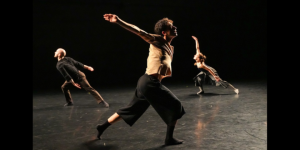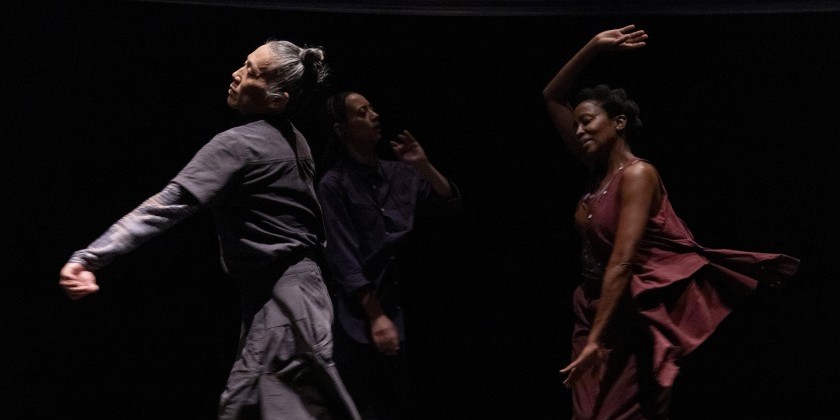THE DANCE ENTHUSIAST ASKS: Reimagining the Swan — Fadi J Khoury’s Journey of Survival and Selfhood

Don't Miss Fadi Khoury's FJK Dance at New York Live Arts from June 17 - 18, 2025
What happens when a role rooted in fragility and femininity — the iconic Dying Swan — is reborn in the body of a queer Arab man? For Fadi Khoury, Artistic Director of FJK Dance, it becomes not a story of death, but of defiant life. In his upcoming season at New York Live Arts from June 17 to 18, 2025, Khoury tells a story of survival, identity, and resilience, one shaped as much by displacement and trauma as by beauty and love. With a bearded-body clad in black and moving to the haunting strains of the oud, his reimagined Swan insists on being seen not as an archetype, but as a human being.
The Dance Enthusiast’s Theo Boguszewski sat down with Khoury to talk about his journey from the Middle East to New York, the healing power of dance, and why this season is the most personal he's ever created.
Theo Boguszewski for The Dance Enthusiast: Can you share a little bit about your background in dance?
Fadi Khoury: My father was the artistic director of the National Ballet in Iraq. He was a folklore dancer from Syria and Lebanon, and he studied at the Royal Ballet Academy in London in the 70s and 80s and then moved to the Middle East. And at the time, Iraq was the Dubai of the Middle East, and the ballet was a beautiful, huge production. As I was growing up, Iraq's situation was changing, and so that life was coming to an end.
We moved to Lebanon when I was 14 years old, and that's the time I was really hopeful to dance, even though I was pressured to choose anything but dance. I started with folklore dancing because one of the biggest companies in the Middle East is Caracalla, but during that time I was taking ballroom, jazz, and ballet. When you're 17 and 18, you think you can do everything, and I wanted to do it all. But my anchor was that folklore company, and the training was mostly Russian and Ukrainian ballet coaches and dancers. So I had a lot of technical training by the time I came to the US. I came as an Iraqi refugee to Nashville, Tennessee, and within a few months, I moved to New York.
Your upcoming season at New York Live Arts is centered on identity, survival and resilience. How did these themes shape your creative process for the three works you’re presenting?
The last two years have been a real journey. The pandemic was a substantial time in my life because it was my opportunity to come out, and take a chance on being my true self. And that journey started with recognizing the stigma behind that authenticity. It was strange to realize that with all the freedom that I exuded in dance, I still was holding back so much of my heart. Spending time away from the stage and having time to reflect on my heart and my true instinct to love was challenging but transformative.
Two years out of the pandemic, I was struggling to be authentic and find my true voice while fighting to maintain a nonprofit dance company in New York. And I went through my first gay relationship. I learned so much from being really open and exposed. It was tough to be in that place; I am an extroverted artist, a symbol of freedom for everyone who watches me, but I was battling with all of my insecurities and an embedded shame for loving authentically. I was able to explore true vulnerability on stage, and that goes into the themes and the stories that I chose to share in this production.
And then October 7th happened in 2023, and a flip in the environment in New York City was really evident. When I started my company in 2014, I was still dealing with the residue of 9/11 and having to prove that as an Arab, I can still be a ballet dancer, I’m not a terrorist.
So fast forward to this moment, where I'm battling with my own struggles in authenticity and my own identity, and then I am faced with an exterior pressure of justifying my existence. I'm being attacked by those assuming that because of the way I look, I am a terrorist or a terrorist supporter. And the attacks are more specific because nowadays I have a queer identity, and people say, “How dare you be gay and support these countries? Don't you know that they will kill you if they find you?” And once again, I have to remind people that I'm human.
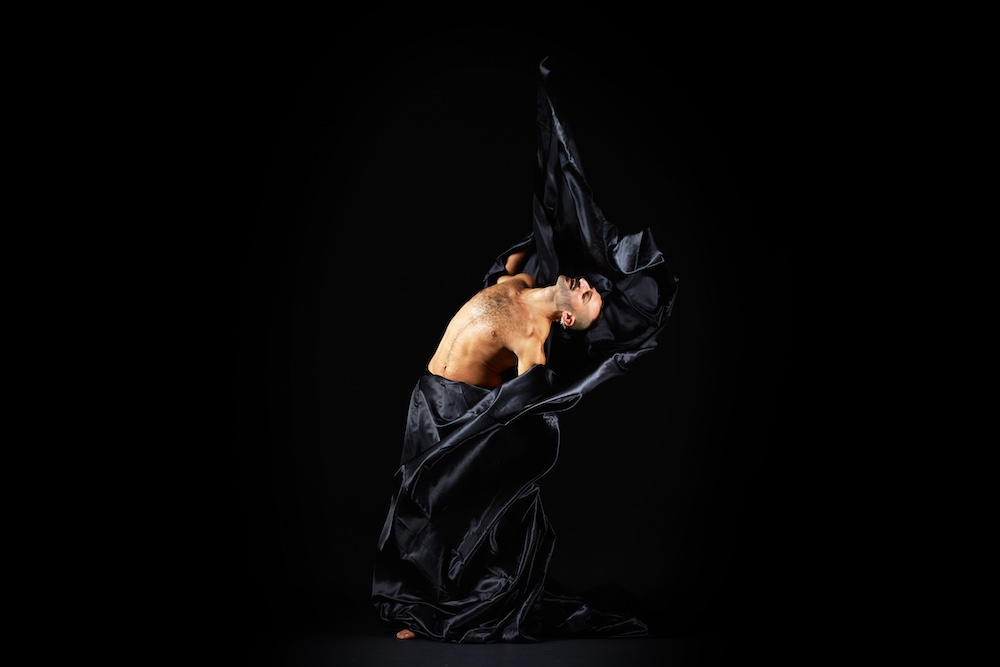
In 2024, I started to read a lot of Rumi’s poetry. I wanted to find literature and writing that comes from the Middle East and has nothing to do with religion or politics. And I found that Rumi, being this incredible Sufi poet, teacher, and guide, has a universal impact around the world. And people relate to the humanity of his work.
So that’s where this production really came together. Between choosing the music and working with a composer and the dancers, it really took a whole year of doing little things, little dreams, manifesting little projects with each dancer, and by now it's a full evening experience.
Your reinterpretation of The Dying Swan replaces fragility with strength. What drew you to this iconic solo, and how did you decide to reframe it through an Arabic, masculine lens?
After our big 10th year anniversary performance in 2024, I wanted to return to what I loved first: ballet and classical music. The Dying Swan is a glorious piece of music — how incredibly soft and powerful those chords are! I wanted to just dance to it and feel it.
And then, in filming myself, it's almost like I stepped out of myself and realized that my own prejudice showed up; I wanted to see that dying swan as a beautiful, skinny woman. It made me think of that stereotypical gender expectation that I typically fight in my creative work. I realized, "Wow, this is a chance to cross that boundary." Why can't a man exude that sensual, soft fluidity? And then I posed another question, which is why are we expecting that softness and pain in the chords to only express death? The piece was originally composed for the Carnival of Animals, so it was really referring to what the different animals exude in their characters.
In that challenge, I am hoping to represent a story of resilience and of gender identity in its true form. The power of that piece of music has reached everyone in every ballet theater and every home. So I would like to use that powerful tool to send a message of today, which is that I'm a male identifying human. I happen to be Arab. Will you see me? Will you listen to me? Will you sit with me? I'm curious how people will react to it.
MOVE is often described as a signature of your choreographic style. What continues to draw you back to this piece?
I found that a way to recover from the dramatic tension in The Dying Swan is to bring in a piece that I choreographed in 2016 called MOVE. At the time I collaborated with my partner and co-founder, Sevin Ceviker, who is an incredible modern dancer and ballerina. She was exploring this choreography with me on pointe shoes and then invited my friend Sofia Bogdanova, who's a finalist in competitive Latin ballroom dancing. And at the time, it was really about bringing friends together and seeing how they could break that stereotype of the male and female duo.
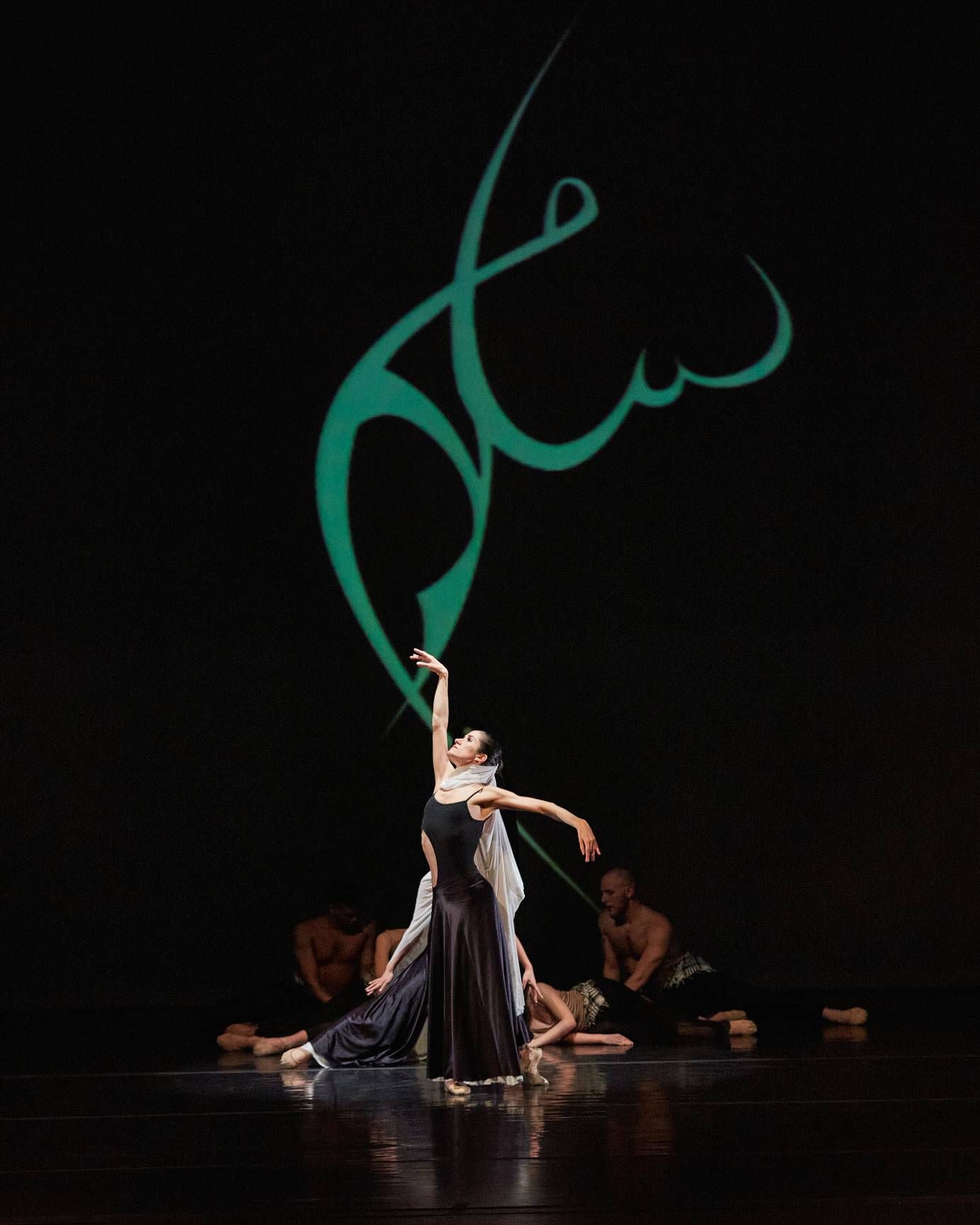
It's a trio with myself, Sofia in heels, and Sevin in pointe shoes, and I take them on a ride with music that's composed by a Lebanese percussionist. It includes Latin rhythms mixed in Arabic percussion; it has nuances of Rumba and Cha Cha. The outcome is exhilarating and freeing for these powerful women in their individual elements performing in harmony. And it's called MOVE, because I didn't want to call it anything else. The juxtaposition of The Dying Swan and that abstract piece is so exciting.
TO HEART blends poetry, live painting, calligraphy, and music. How do you approach combining so many mediums into a cohesive narrative onstage?
In TO HEART, we go into a completely different dimension; the environment of the piece is much more theatrical, ethereal, and dreamy; I bring people on a journey to love. And the piece will include a big painting that's set up on stage. In the last four years I've been experimenting with live painting and the impact of the body as a dancer, being a painter on stage. So people are going to witness a lot of different media of expression.
How did you connect with your collaborators?
My company has always had an international roster of artists because New York is full of international dancers. Everybody comes to New York to feel free. I lean on my dance friends and my musician friends. Mal Stein is a composer who I've been working with for the past four years; we worked on sound design for a piece called Off Limits, from 2020 and 2021. Mal is intrigued with Middle Eastern instrumentation and culture. His openness as an American artist to my culture creates such a beautiful connection.
And then there’s Zafer Tawil, an incredible virtuosic violin player. Zafer is a Palestinian-American artist who has been in New York for many years. He was so supportive and understanding of my struggles with being queer. Coming from a similar background, he understands the kind of pressure I have from family and friends in the Middle East. His kindness inspired me to find ways to bring his voice into the theater. The composition of my pieces come together because of specific intentions and conversations with these artists.
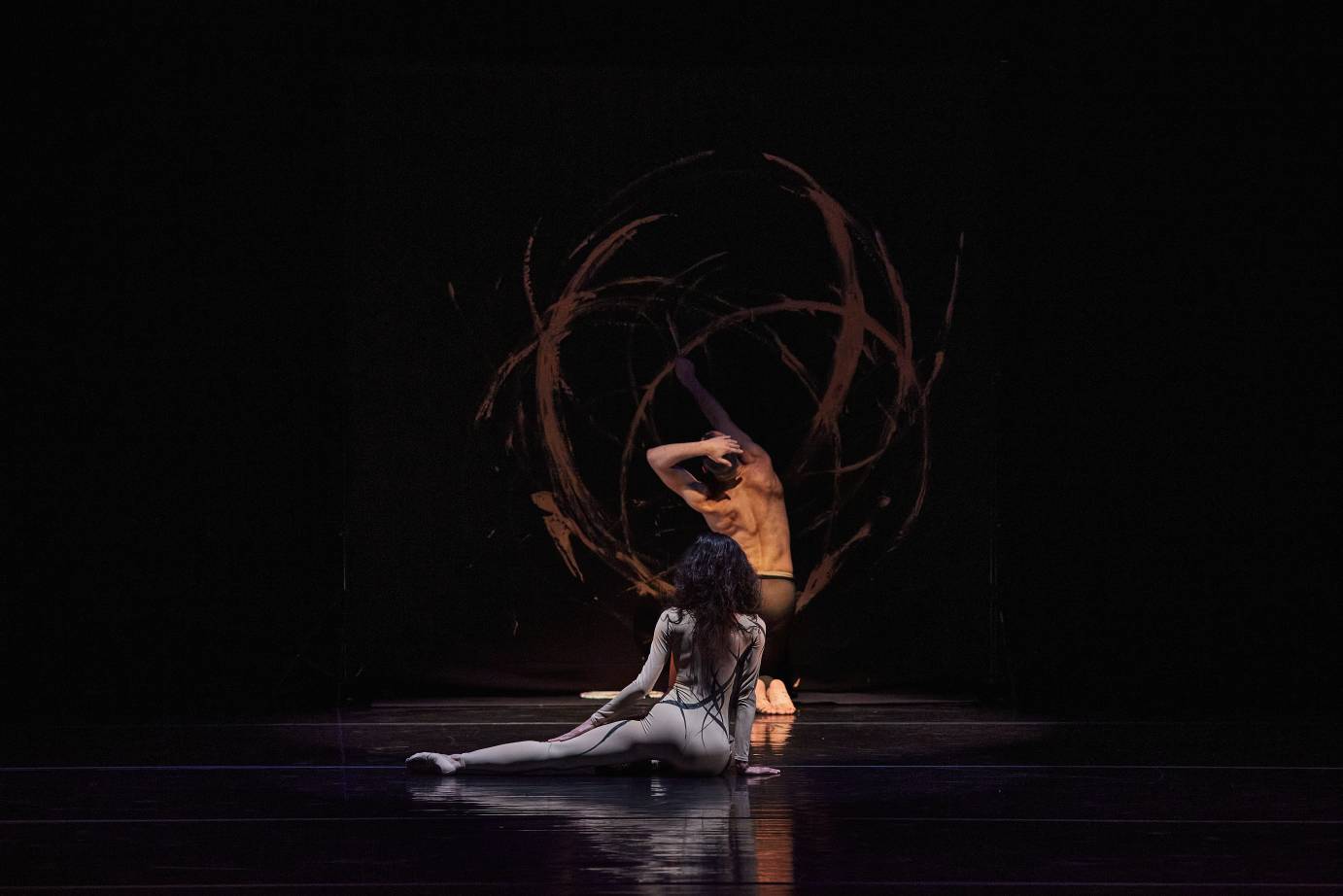
Your Artist-in-Residence work at Kings County Hospital is unique. How has working in that environment shaped your understanding of dance as a healing practice?
One of the first things I learned about forming a dance company is how nonprofit work can support the production of art. In the beginning, I had to explain to people that, yes, I come from Iraq, and I did survive several wars, and I did live in shelters, and I was traumatized in many ways, but I still have beautiful dreams on stage. And I know I survived all of this because I was exposed to the art form of dance, and the ability to make dreams a reality on stage.
One of my board members, Ann Rakoff, was a former executive director at Fordham Law School, and had a connection to the director of behavioral health at Kings County Hospital. He came to a show, and found great inspiration with my message. He invited me to see if we could collaborate.
I realized in touring the hospital that the tension is real; the panic that you see between emergency rooms and psychiatric hospitals is unfortunately very familiar to someone who came from traumatic wars. And so, as a volunteer, I found that I could participate in the hospital by providing dance to help people relieve stress and smile.
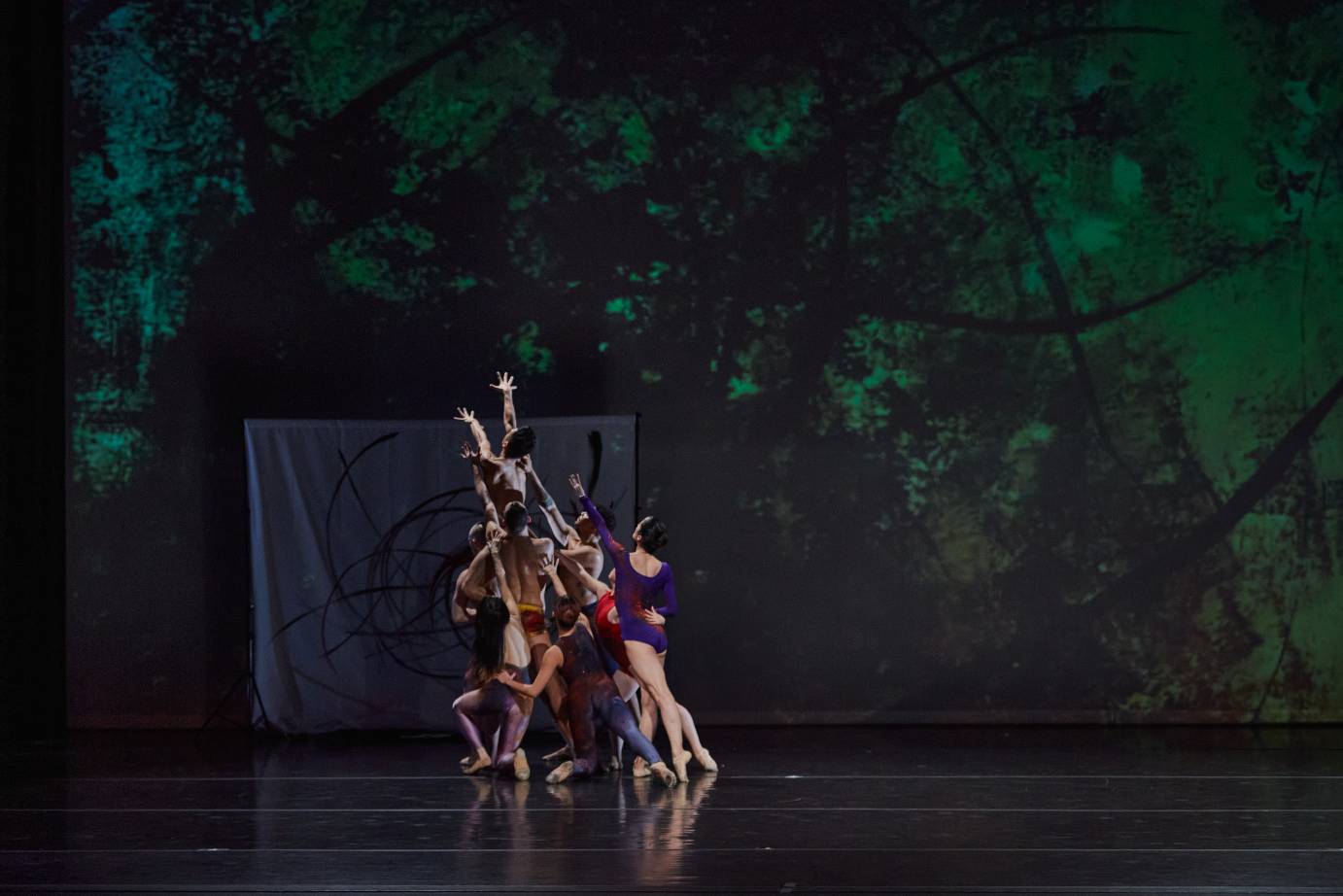
When I am faced with these stressful challenges, my intuition is to bring a smile and bring joy and bring beauty, and that was very instrumental in the hospital. This year, we are so proud to be sponsored by the New York State Office of Mental Health. We found this great correlation in fighting the stigma behind mental health. The grant is really helping us to expand our project and our outreach.
I don't just dance because I'm a good dancer, I dance to survive. I dance to say YES to tomorrow. When I meet people in hospitals wha are in extreme, desperate situations, I know what that feels like, and I know that I can give them hope.





